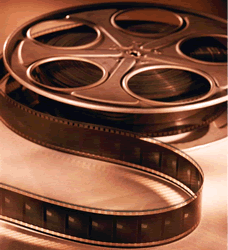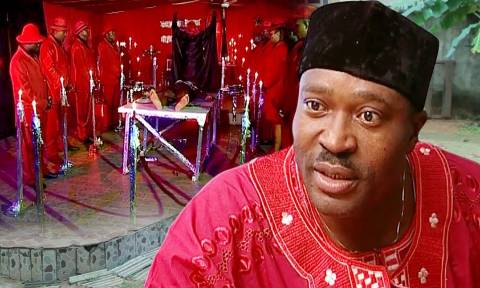
When dynamic, youthful, energetically charged and ingenuity loaded Jeta Amata, one of Nature’s finest gifts to Nollywood, operating within the directing purview and an advocate of contemporary mind blowing movie productions, decided to brave all odds and take a deep plunge into the sea of 35mms, his colleagues, friends and those he shared his dreams with had impliedly spewed out their reservation about embarking on such a risky venture.
Despite the side talks in low tones, pessimism and tale of woes that could likely befall such colossal project, he chose to turn a deaf ear, and opted to pursue his dream with vigour, most importantly believing in himself that it could be done.
Clothed with the garment of aspiration, richly embroided with determination and resilience and spurred on by an inner generated drive flaming the passion for his dream, with the Lord by his side , he finally birthed his dream, with the lovely movie “The Amazing Grace”. The movie starred Nick Moran, Scott Cleverdon, Mbong Odungide, Fred Amata, Joke Silva, James Hicks, Itam efa Williamson.
Jeta’s ‘baby’, took the local and International scenes by storm and earned him prestigious awards, amongst which was for “Best Cinematography” at the African Movie Academy Awards (AMAA) 2007. He’d proven his critics wrong by this remarkable achievement. Some encouraged by his record have opted to follow suit, empowered with the knowledge about the opportunities that abound through the 35mm motion picture.
The 35mm film gauge is the internationally recognised standard gauge for making films, having beaten the other ranges from 13mm – 75mm before the turn of the 21st century. As a result of this endorsement, films made on 35mm possess the capacity to be played in virtually all the movie theatres spread across the Globe. Its capacity to be constantly modified by the manufacturers Kodak and Fuji Films broadens its scope of application to move with the changing technology.
The 35mm has over the years proven to be world class, but how ideal is it in an Industry where the financial storm constantly impedes the film makers’ progress and threatens now and again to capsize their boats so that they might sink in to the murky sea of oblivion.
Shooting a film on 35mm is a financially back breaking venture, running in to eye popping millions of dollars, with investors rolling out as low as $130 million for a high budget movie. Not all movies shot in Hollywood make it to the theatres, due to its expensive nature, some are recorded on DVDs and sold. The alternative approach for die hard lovers of 35mm format would be to shoot on 16mm and have it blown up to 35 mm, (though with additional expenses being incurred), if one is determined to have it in the theatres, prestigious International film festivals, and of course has eyes on the Oscar
Nollywood has been polarized into two schools of thought. The first are of the opinion that the 35mm format being the best film gauge, though expensive should be used in shooting movies. It would facilitate swift promotion of Nigerian stories, exportation of same, and would be viewed by a numerically unbeatable audience, consisting of Nigerians in the Diaspora and non-Nigerians alike. This in turn would translate to good foreign exchange earning in the Government’s coffers, invariably boosting the economy.
Shooting on celluloid is not new to Nigerian film makers, such feat having been accomplished during the “Golden Years of Motion picture” in Nigeria by key film makers such as Eddie Ugbomah, Ola Balogun, Late Hubert Ogunde, Adeyemi Afolayan, Ladi Ladebo, Adebayo Salami, to mention a few.
The films produced back in the 70’s were viewed at the cinemas and exhibition centres. If shooting on celluloid was accomplished back in the days, who says it’s impossible to re-live that era ? Who says that Nigerian movies can’t be nominated in the Foreign Language Film category at the Oscars or even other categories and win, just like the movie Slum dog Millionaire did? It would certainly compel other movie industries to beam their search light in our direction, open up great partnership deals and investment, create opportunities for Nollywood actors and actresses to star in Hollywood flicks!
The other school of thought does not mince words in rebutting the 35mm clarion call. As far as they are concerned, Nollywood is a Home video Industry, which means it’s video based and successfully thrives in Africa and other countries. Therefore, clamouring or canvassing for the use of the 35mm film gauge is an effort in futility. Besides, few cinemas exist in Nigeria (Silver Bird, Nu Metro, Genesis Deluxe, City Mall cinemas) in comparison to its Hollywood and Bollywood counterparts. The ordinary man on the street can presently watch movies on vcds/dvds which are affordable, in fact dirt cheap, when compared to the amount movie goers spend in purchasing tickets to watch flicks at the cinemas.
Its expensive nature and lack of private partnership participation have worsened the matter. After all, the vcds/dvds can be exported to foreign countries and still be watched by a large audience within the comfort of their homes and at their leisure. The cost of advertising and distributing movies to the theatres is rather expensive, which can be re-channelled purposefully to accomplish other things and with the Home theatre systems creeping in, digital technology making waves in Moviedom, a revolution is being envisaged with the cinemas gradually showing flicks away from the norm.
It is not certain whether a global dearth of 35mm will soon occur as speculated by sceptics. Whichever schools of thought one decides to align oneself with, the fact still remains that the movie industry is not static but dynamic.
Nothing sure beats the feeling of relaxing in the Theatre with your friends or loved ones, eating popcorn and watching the original, unabridged version of the movie on a visually magnified screen with peak of the pack recordings, projecting the adrenaline pumping, suspense killing, spine chilling, rib cracking, and sometimes boring unfolding events in the flick, ably complimented by cool special effects, technologically inspired and manipulated to give you a lingering satisfying viewing experience of a life time.
www.nigeriafilms.com



















